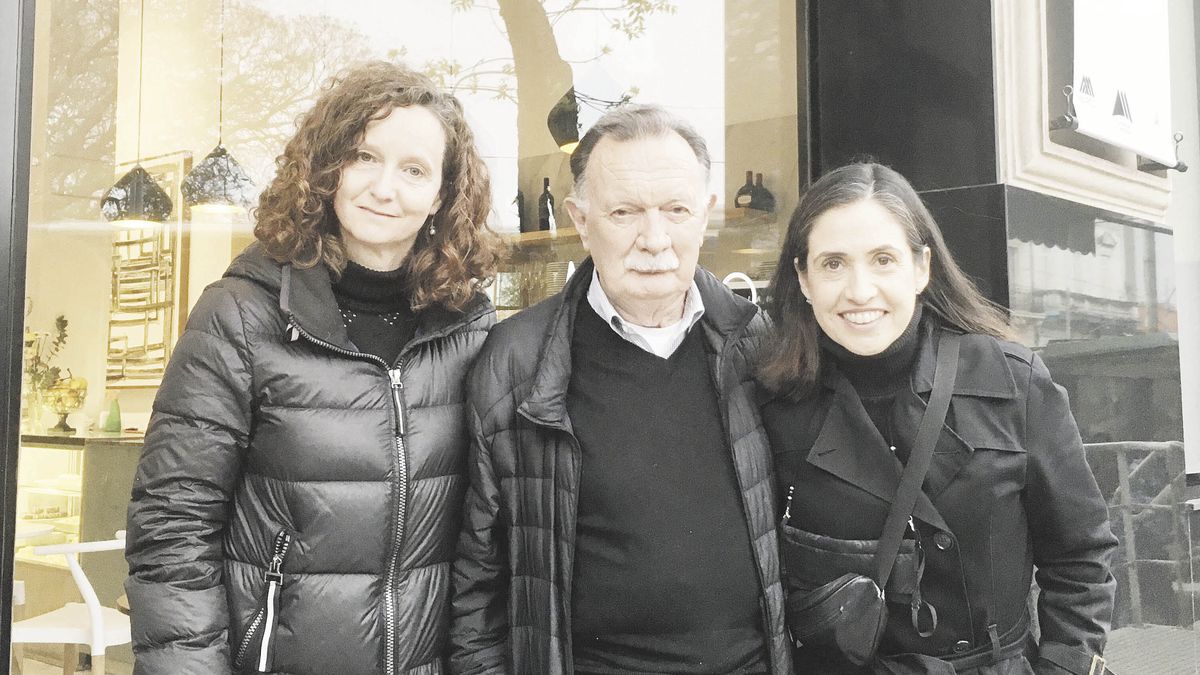Felix Monty: In the analog world the changes were gradual. In digital there is constant change, 8K is already being worked on, everything is going at excessive speed, competition between companies makes the news come on top. You close your eyes for an hour and they already lost you. I am interested in discovering how all this is being built. Now, instead of just teaching them, I have a regular exchange of knowledge with my assistants.
Q.: Your training was very different.
FM: I was lucky to have learned from the age of 14 with Tabernero, Younis, Etchebehere, and González Paz, always at the side of a teacher, as in the workshops of the Renaissance. At the same time, I was drinking on my own in painting workshops, to learn the secrets of color and perspective. And I like to keep learning.
Q.: How was the work of “Santa Evita”?
FM: We were almost a year, a huge series, and it’s a whole new world that one must know, working with two directors and with large companies that lower their standards. Before, the relationship was direct, the director and the producer went to the court like us. That was lost. Luckily the people from Non Stop, like Bettina Brewda, and from Disney, gave me great support. Also the directors. Rodrigo García is a very confident man, very clear. Alejandro Maci was the nerve, the backbone. I have known him for almost 30 years, when the filming of the last film by María Luisa Bemberg, “That is not spoken of”. He was her assistant, and she, poor thing, it was very obvious that she was already bad.
P.: And he said goodbye with that beautiful and sad comedy…
FM: The character chooses the circus, as she chose the cinema, freedom. María Luisa was the first director I worked with. Later, Lita Stantic, with “A wall of silence”, Lucrecia Martel, so solid in her internal world, the Brazilian Florinda Bolkan, a person of imposing beauty, a mixture of Turkish and Tupi Guarani, and others, all valuable.
P.: That, already in his second stage in Brazil.
FM: It was kind of weird. When I was young I made advertising films here in the US, small things for big ads, and Brazil. There I once chatted with Luiz Carlos Barreto, who was director of photography at Cinema Novo. Decades later, already an important producer, he called me to work on “O quatrilho”, by his son Fábio. We were not friends, I don’t know why he chose me, there are very good technicians there. The film was a success, nominated for an Oscar, and I continued with others by Fábio and his brother Bruno, and with others like Guel Arraes and Jorge Furtado, good people, with whom I made “The Invention of Brazil”.
Q.: You also did two in Spain, for which you were nominated for a Goya: “Luz de domingo” and “2 de mayo”, each frame looks like a painting.
FM: Merit of the art director Gil Parrondo, a huge artist. They are films by José Luis Garci, who does such soft, beautiful works, such as “Cradle Song”, or “El Abuelo”, but he is also half a chinchudo, so he has many enemies there.
Q.: So let’s talk about the directors here. Pino Solanas, for example…
FM: In “El exilio de Gardel” we imposed the greatest demands on ourselves, he came with an idea of rupture, of symbiosis between the arts, he needed to come into conflict and resolve things on set, sometimes changing what was planned. Miguel Angel Solá was desperate, the French producers, so structured, looked at him perplexed, but later the film was a success, and we continued with “Sur”, also with Solá.
Q.: Another one who changed roles was Favio, right?
FM: We were talking with Leonardo Favio for three years, planning scenes for “Aniceto”, and later he did it with Alejandro Giuliani. Well, part of the job is the preparatory talks, that is work time, and we had very enriching talks with him, because he was a person of great sensitivity.
Q.: Luis Puenzo.
FM: We started very young doing advertising, we tried everything (he says “they paid us to learn”), we participated in “The surprises”, and later, with the screenwriter Aida Bortnik, we made “The official story”. In part, we shot it clandestinely, because it was the first months of democracy and the “task groups” were still threatening. Now, going from something almost intimate like that movie to blockbusters like “Old Gringo” and “La peste”, with that display, was a pain. But it had to be that way, Luis’s world was growing up. I regret that he is no longer in the Incaa. In 2016 the Hollywood Academy invited us to join. We accept, although later, at the time of voting, that game with the prizes does not excite me.
P.: Juan Jose Campanella.
FM: my son in law I like working with him, we work very hard on each project. “The story of the weasels”, I like it a lot. And “Winds of water”, “The secret of his eyes”, “Metegol”. So I could also talk about Héctor Olivera, Barney Finn, Saura, Diego Kaplan, many others.
Q.: But the one you worked with the most is Ariel Winograd.
FM: Winograd is a machine, a man with great resolution speed, always one step ahead of the rest. Some criticize that he makes commercial films. But he is very good! For me, there is no reason to undervalue commercial cinema, nor differentiate it from artistic cinema. I work in both with the same dedication.
Source: Ambito
David William is a talented author who has made a name for himself in the world of writing. He is a professional author who writes on a wide range of topics, from general interest to opinion news. David is currently working as a writer at 24 hours worlds where he brings his unique perspective and in-depth research to his articles, making them both informative and engaging.



